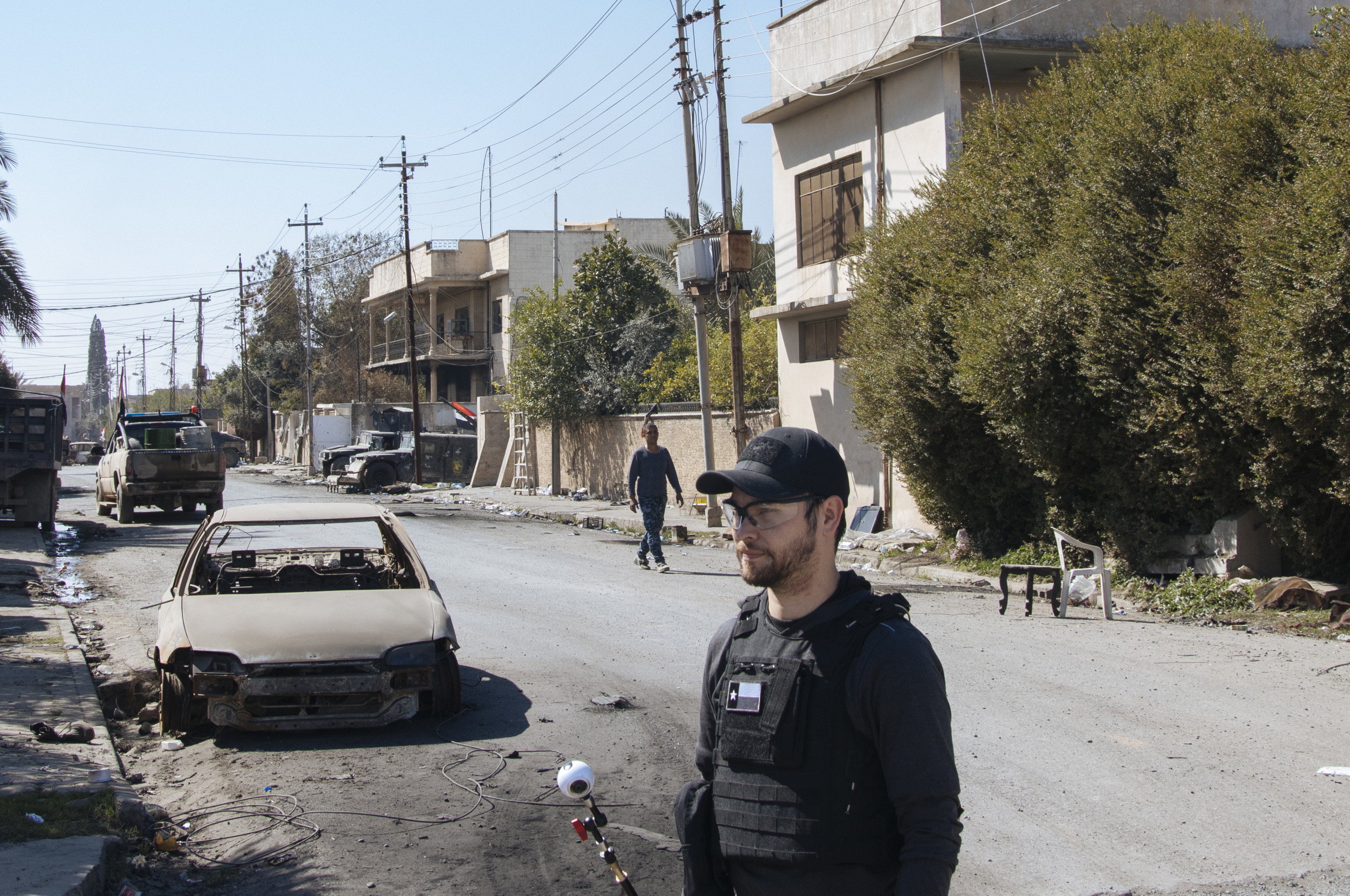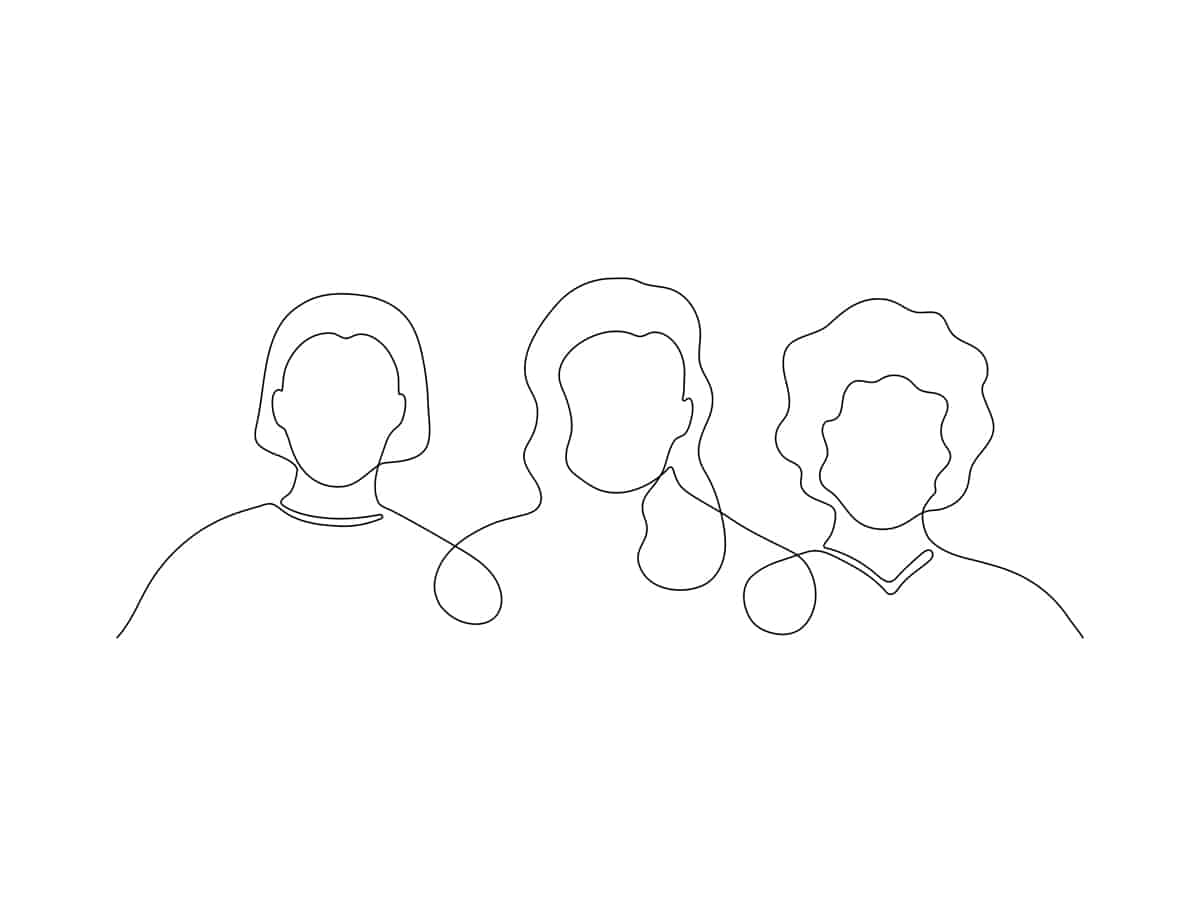The street is hauntingly tranquil. Ash and dust line the sidewalks, while the shattered facades of apartment buildings reveal rooms long since deserted. In the distance, scattered gray-green trees provide the only signs of life or color. People have been living in this area since 6,000 BC. Now, the sound of nearby gunfire rings through empty streets.
In 2015, the multimedia production company Freelance Society traveled to Syria to document the devastation of the ongoing civil war, placing themselves at substantial risk to provide a firsthand perspective from a largely under-reported conflict. “Probably the most unsafe thing to do is to film 360 in a conflict zone,” admits Freelance Society filmmaker Dylan Roberts, who has reported from Syria. “You need to leave the VR camera standing alone. Then you somehow need to get out of the shot—which is hard, especially when there isn’t much room to hide from crossfire.”
Such occupational hazards come with the territory. As co-founder and CEO of Freelance Society, Roberts makes his living racing to the epicenters of natural disasters and armed conflicts for clients like Vice, The New York Time, and The Economist. In the last two years alone, he’s reported from a makeshift hospital hidden within an abandoned home in Iraq, crossed the Hungarian border alongside migrants fleeing ISIS and Boko Haram, and exposed the disorganization of relief efforts following the devastating 2016 hurricane in Haiti.
Most recently, the Oklahoma-based Roberts was in Houston documenting the aftermath of Hurricane Harvey. His striking footage includes a 360 perspective of an improvised church shelter and the view from a speed boat travelling along a suburban street. A Texas native, Roberts’ old neighborhood was still underwater when I reached him for our interview.
Before preparing for his next trip to Iraq—he’s been working in the country for over eight years—Roberts talked to Format about his career journey, his belief in VR’s storytelling power, and its potential impact on both major newsrooms and citizen journalists.

Roberts’s path to war reporting was a direct one. His parents met in his mother’s native Paraguay while his father was stationed in the country with the Peace Corps, and the family travelled extensively throughout Roberts’s youth. By the time he was 18, he’d already worked internationally as a journalist, photographer, and editor. By the time he graduated university, his lengthy CV included coverage stints in Ethiopia, Uganda, Iraq, and Lebanon.
Through his network of global contacts and local fixers, Roberts began hearing word of Christian Stephen, a likeminded British journalist and high school dropout who’d left home at 15 to document the Somali civil war. In Stephen, Roberts found a kindred spirit, someone who shared his passion for finding the untold stories in complex, inaccessible places. Despite the ocean between them, the pair quickly collaborated on 2013’s The Vicar of Baghdad, a feature-length profile of an Anglican priest working inside Baghdad’s red zone under ISIS threat. Their award-winning film debuted before Stephen turned 19, and Roberts, 23.
Roberts and Stephen were early adopters of the immense potential of VR/360, and in 2015, began using it at their newly-formed production company Freelance Society. Always ones to rush headfirst into a challenge, they released the groundbreaking Welcome to Aleppo within months of their first experiments with the technology. Next, the pair hauled their new cameras and rigs to Nepal to document the lingering effects of the 2015 earthquake on the nation’s children—revealing their exposure to trafficking, early marriage, and child labor in the process. Finally, Roberts and Stephen were able to illustrate the deeper humanitarian impacts behind short, skimmable headlines, in a format that didn’t allow its viewers to look away.
The market for VR/360 reporting has swelled in the two short years since Welcome to Aleppo’s release. Outlets like The New York Times, CNN, and The Guardian have launched their own dedicated 360 production studios, while countless others commission content from freelancers. As dwindling revenues and budget cuts increasingly constrain journalists to their desks, 360 video can provide a unique, on-the-ground perspective for viewers that fully transports them inside the news event.
In an era of heightened media scrutiny, VR footage also offers the tantalizing appearance of objectivity. Gone are concerns that something has been left out of the frame, or that an image was removed from its context. “With traditional methods of storytelling, journalists may manipulate the atmosphere,” says Roberts. “But with VR it’s much more difficult to do. It forces you to be authentic.”
The uptick for VR has been swift, but many media outlets are still struggling to use the technology to its full potential. Virtual reality video is created by using multiple cameras to shoot simultaneous footage, then stitching together the individual clips to create a seamless appearance. “Right now, VR/360 is still very labour intensive for high quality production,” says Roberts. For audiences raised on a 24-hour news cycle, VR’s longer lead times can put a damper on their interest once the next major story rolls around.

There’s also the issue of audience access. The vast majority of consumers view content through their phones, tablets, and computers—not specialized headsets. The effect is still striking, but lacks the truly immersive quality of the VR experience. Likewise, the majority of VR reporting is actually just 360 video, since the “VR” label indicates a degree of interactivity with the objects in the frame. Yet Roberts is optimistic, predicting that recent leaps in VR/360 technology, and its increasing affordability, will soon lead to a corresponding spike in citizen journalism.
For all its promise, VR technology is only a conduit—not a substitute—for a great story. After all, when’s the last time you sat down to watch Avatar? “VR content has to have a reason behind it; it needs to be the best medium to tell this particular story,” says Roberts. “Usually, Christian and I will only tell stories in 360/VR if the story is difficult to get access to, in a place where most people won’t be able to travel and see for themselves.”
Whether you’re circled by children playing in an Iraqi refugee camp, or scanning the faces of anti-immigrant protestors as you march together through Munich’s city center, being on the receiving end of this access is a deeply emotional experience. Google News Lab echoed this sentiment in an ethnographic study released this summer, observing that “users’ impressions of a virtual reality experience are akin to memory, with moments from a VR story processed and consumed as lived experience.” The study explicitly recommended that storytellers and journalists working in VR focus on “conveying an emotional impression, even at the expense of conveying specific information.”
Since VR footage triggers our emotions and registers in ours brains as memory, rather than fact, it’s an excellent tool for advocacy journalism, NGO communications, or similar fields that strategically package their information in order to spur a desired action from their recipients. In a recent Wired profile, Stephen noted that his own reporting is “not just about encouraging empathy, it’s about encouraging what comes out of empathy—what happens afterward.”
On this point, Roberts finally diverges from his longtime partner. “For me as a journalist, my job is to tell the story as factually as possible, whether it’s VR, documentary, print, or photograph,” says Roberts. “I try not to add my opinion or a call for action in my work, but simply to inform, and to tell stories.”













